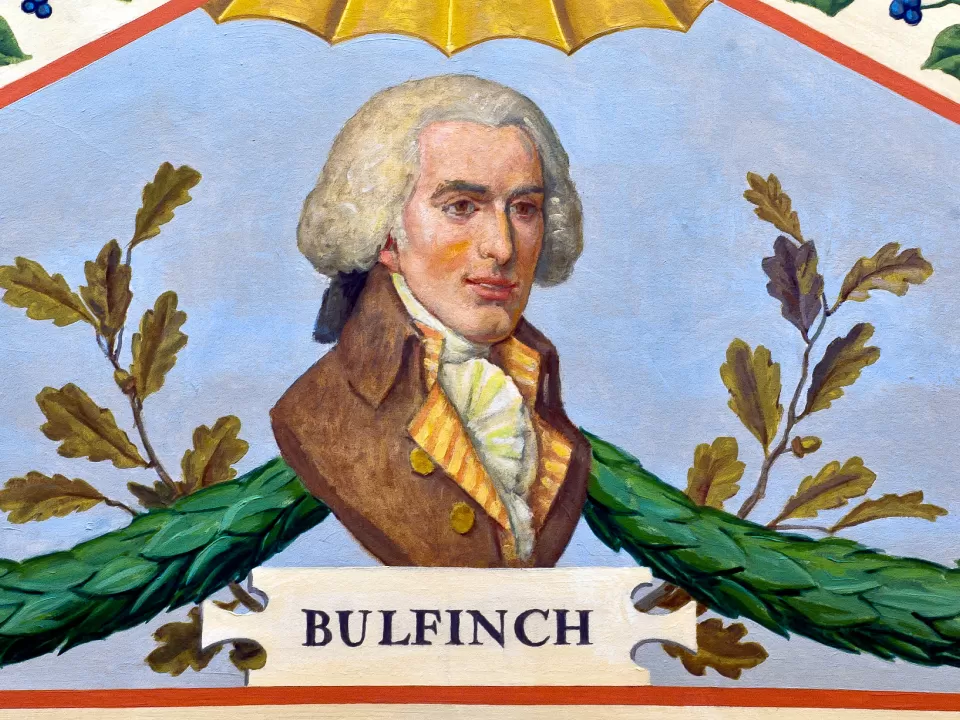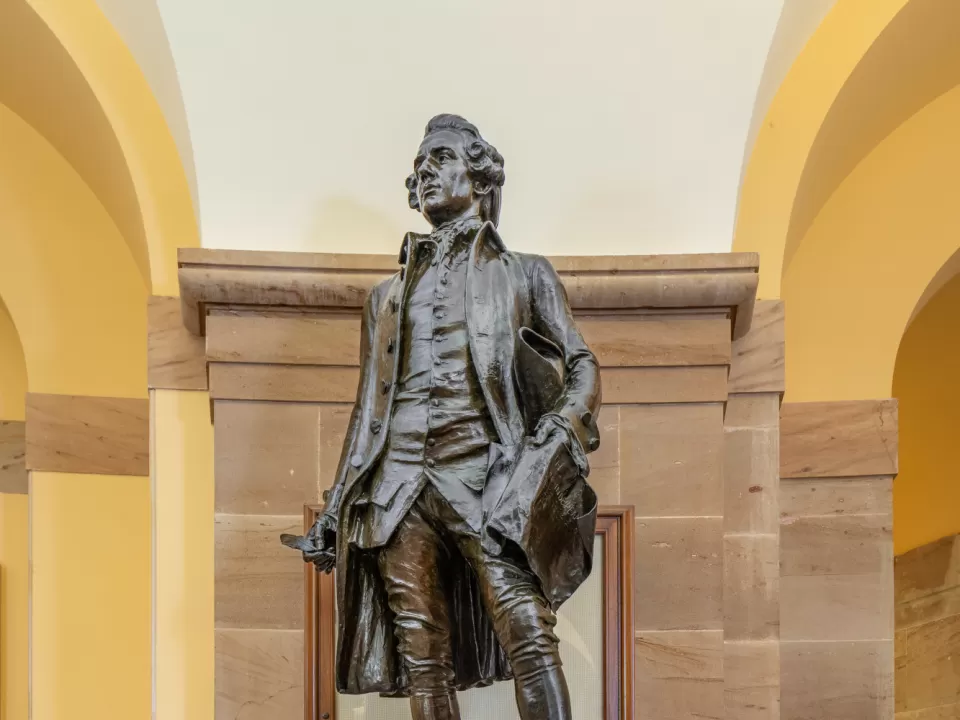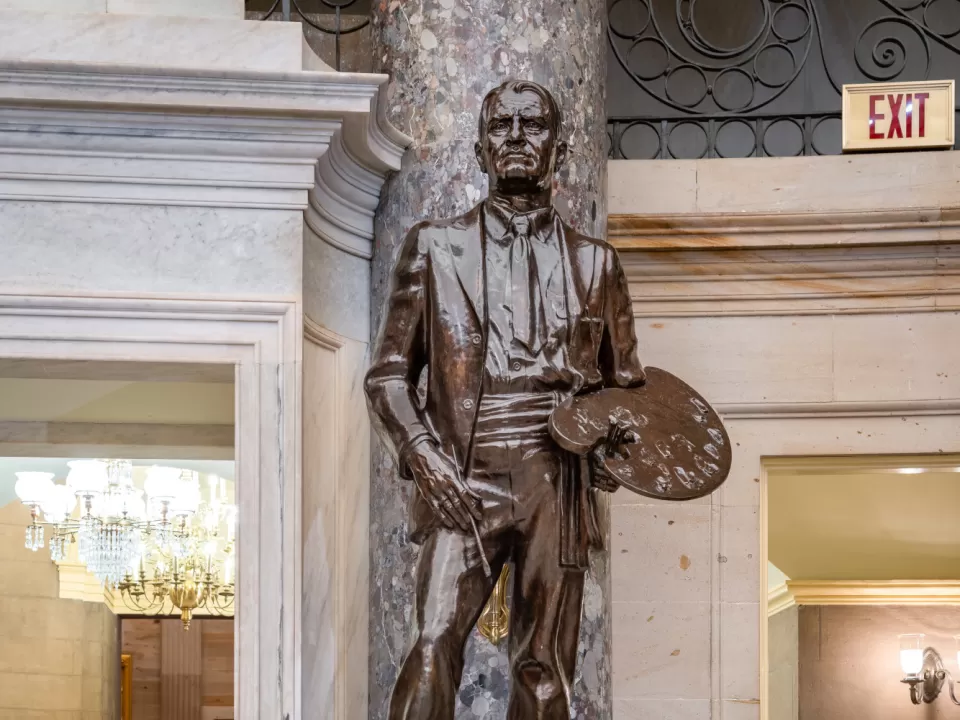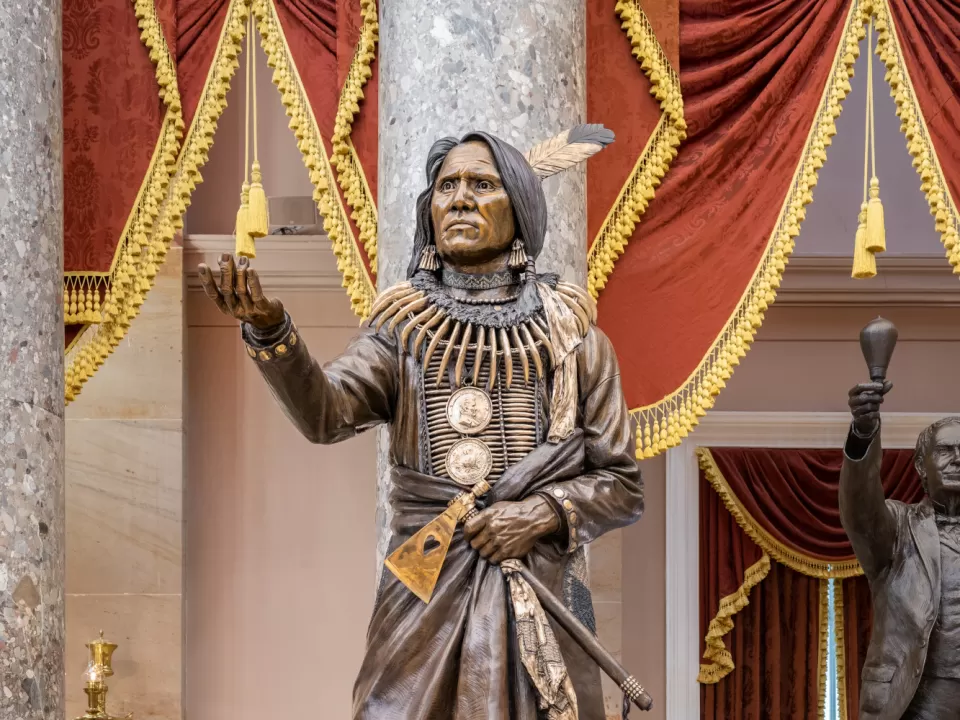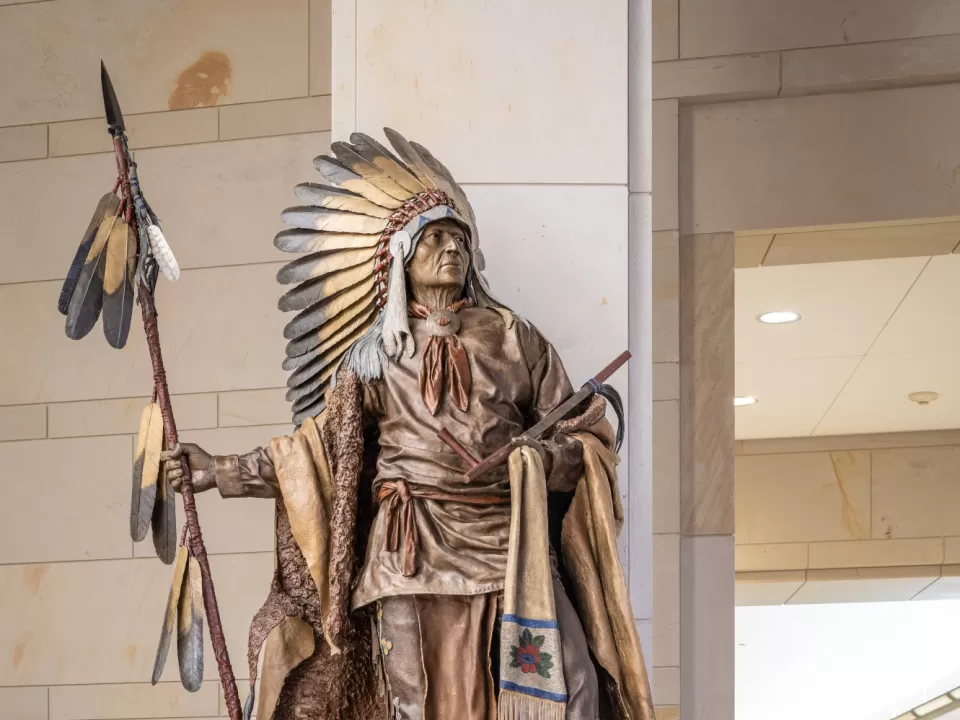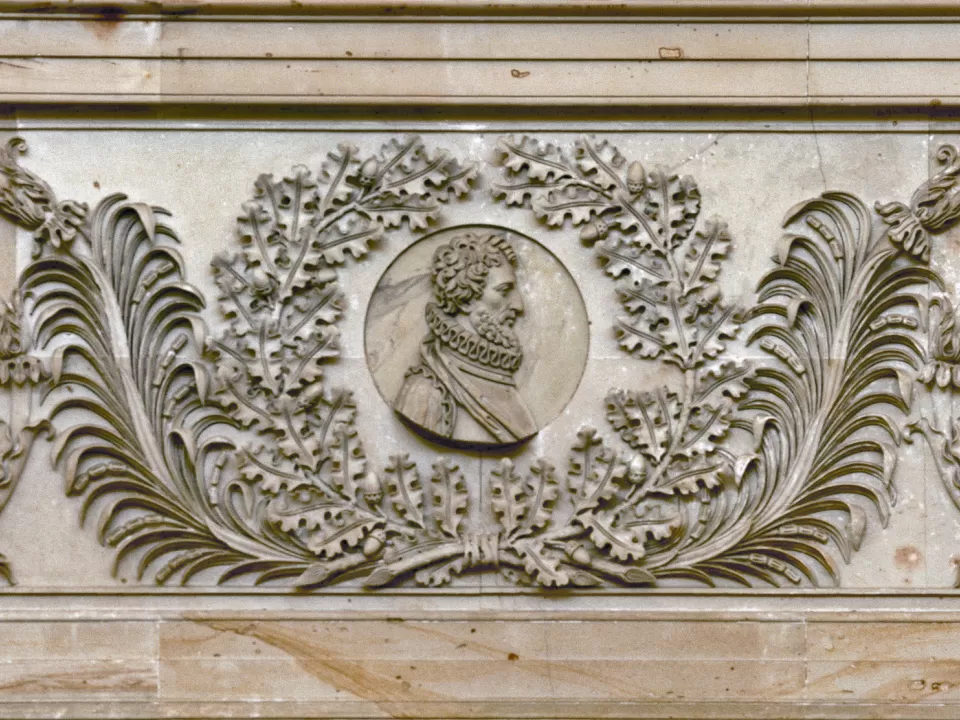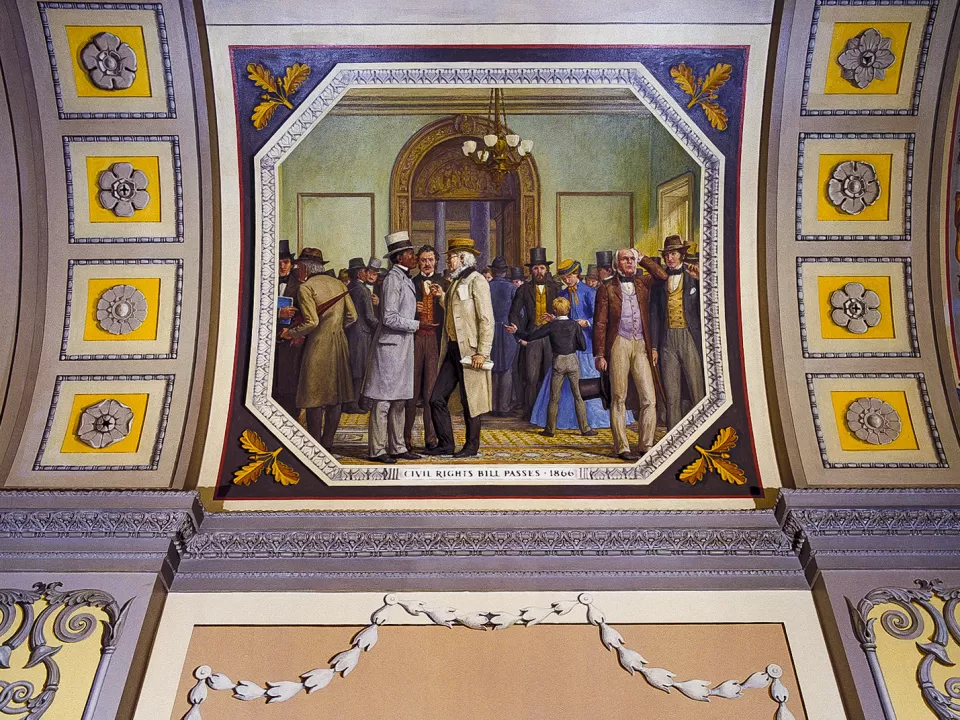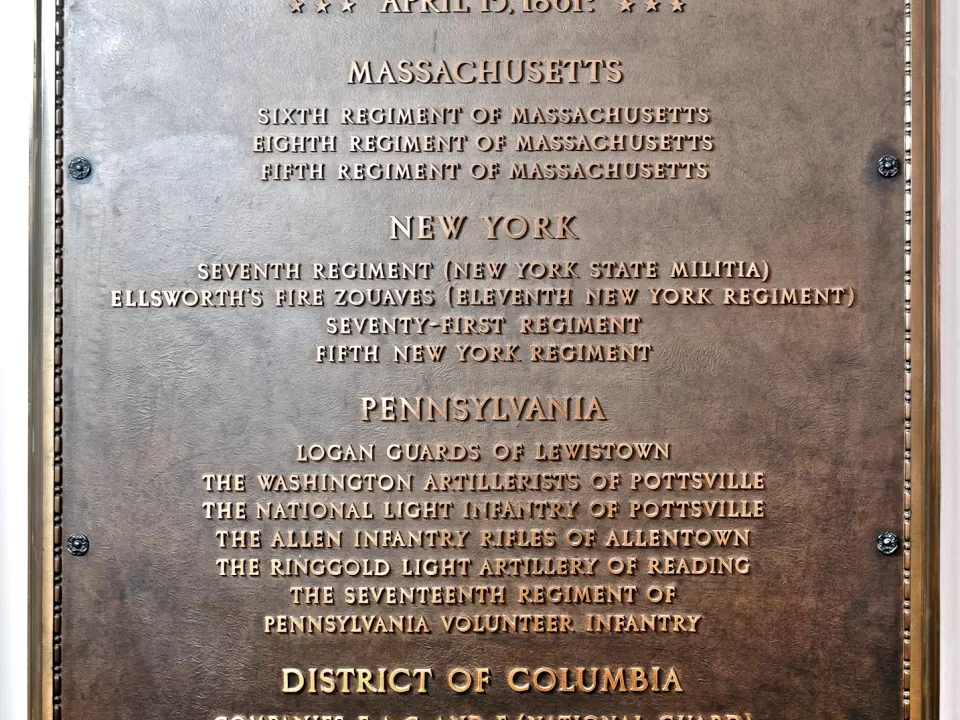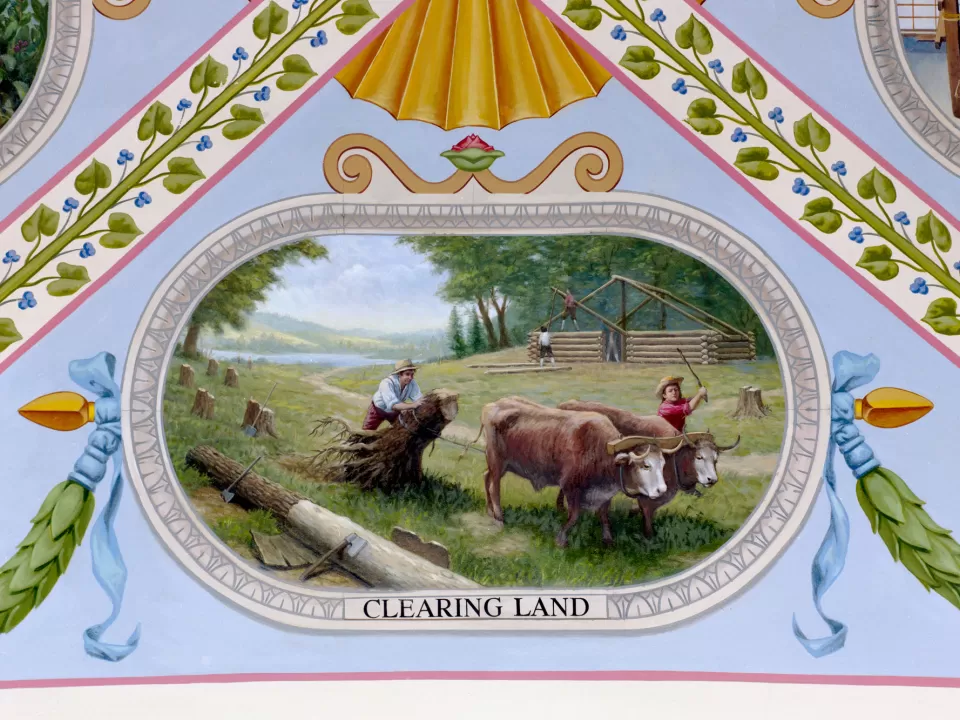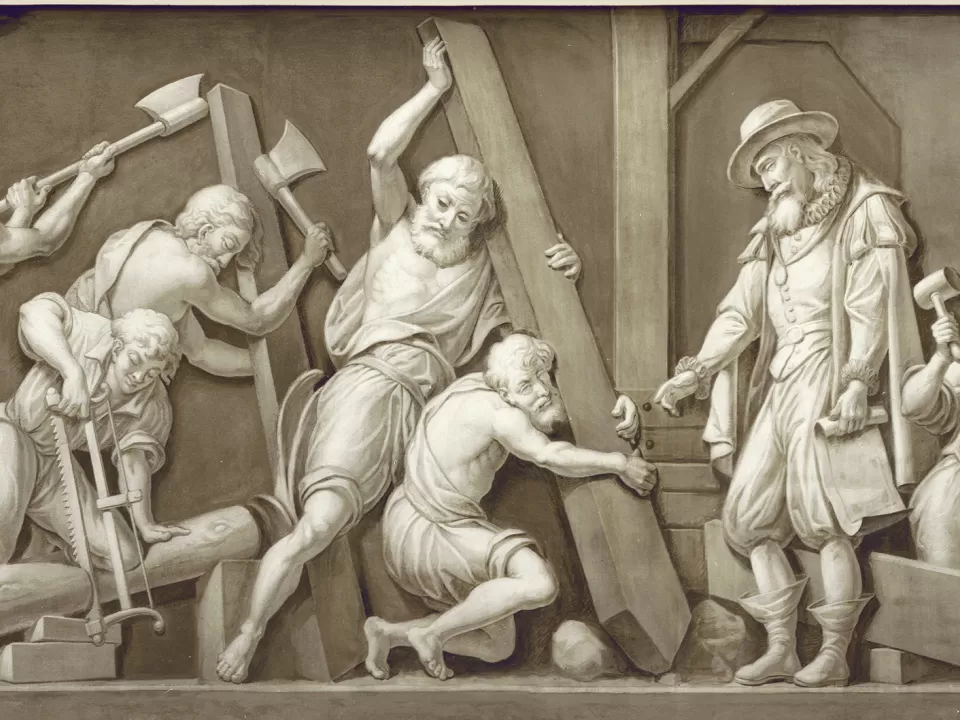Architect of the Capitol employees are responsible for the care and preservation of more than 300 works of art, architectural elements, landscape features and more.
Browse our pieces below or learn more about the artists, collections and subjects.
Filter Results
Displaying 49 - 60 of 338
Charles Bulfinch Portrait
Between 1818 and 1829 the Capitol's center section and first dome were constructed under the direction of architect Charles Bulfinch.
Charles Carroll Statue
This statue of Charles Carroll was given to the National Statuary Hall Collection by Maryland in 1903. Carroll was a statesman and signer of the Declaration of Independence.
Charles Marion Russell Statue
This statue of Charles Marion Russell was given to the National Statuary Hall Collection by Montana in 1959.
Chestnut-Gibson Plaque
Memorial plaque honoring two members of the U.S. Capitol Police who died in the line of duty.
Chief Standing Bear Statue
Chief Standing Bear of the Ponca tribe was the central figure of an 1879 court case that established that Native Americans are "persons" under the law and are entitled to the same rights as anyone else in the nation.
Chief Washakie Statue
This statue of Chief Washakie was given to the National Statuary Hall Collection by Wyoming in 2000. Washakie's prowess in battle, his efforts for peace and his commitment to his people's welfare made him one of the most respected leaders in Native American history.
Civil Rights Bill Passes, 1866
The 1866 civil rights bill, which prohibited discrimination on the bases of race or previous condition of slavery, prefigured the 14th amendment to the Constitution.
Civil War Troops Quartered in the Capitol Plaque
This plaque identifies specific troops quartered in the United States Capitol during the 1800s.
Clearing Land
Two settlers use a team of oxen to remove the stumps of newly felled trees while, in the background, others build a log hut next to an inland river.
Colonization of New England
Early settlers cut and saw trees and use the lumber to construct a building, possibly a warehouse for their supplies.

